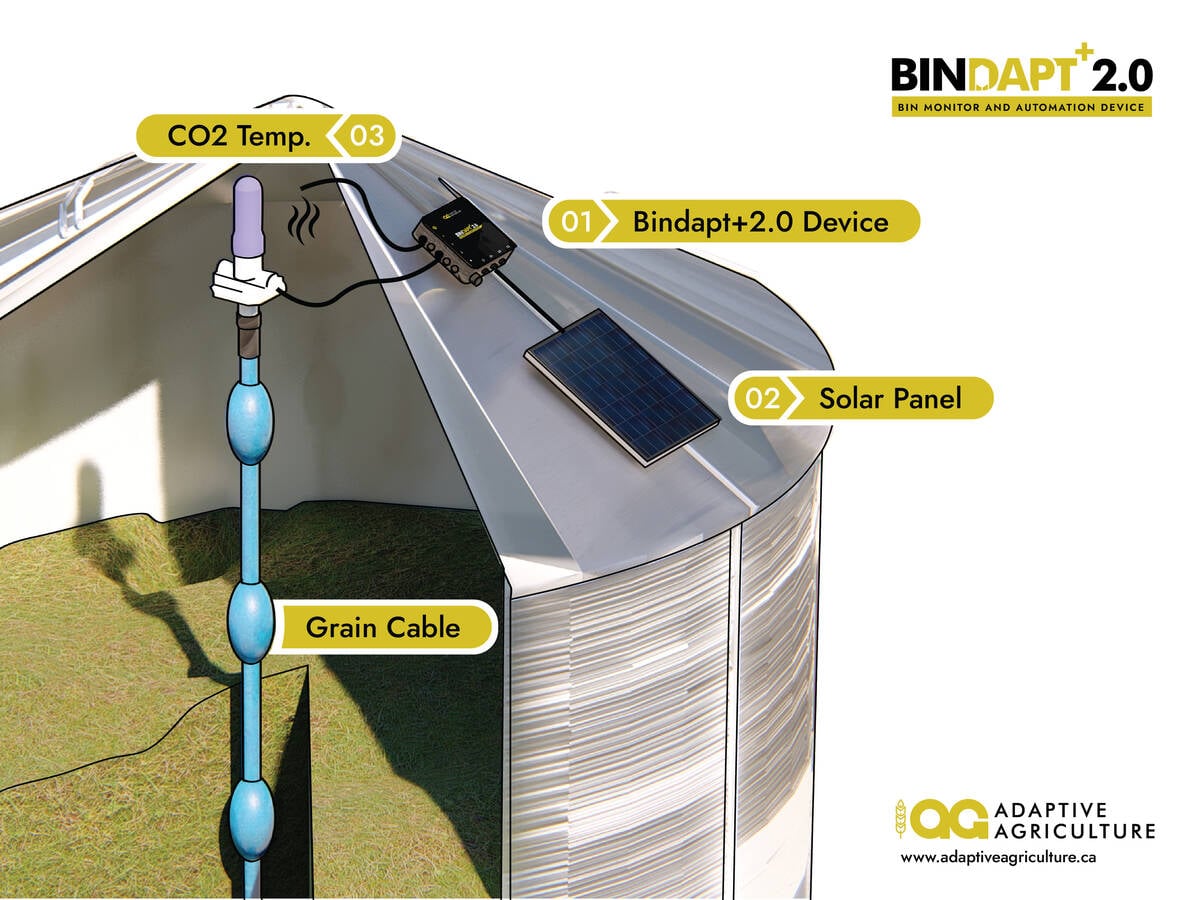Glacier FarmMedia – Research on virtual fences for livestock is gaining momentum in Western Canada.
One technology being studied uses collars on animals that emit a series of audio warnings and, if need be, an electric pulse, when livestock approach an invisible boundary set with GPS coordinates.
“The animals are actually able to get trained with the collars in a period of four days and were very quick to realize that whenever they hear the audio cue, they need to change direction so they don’t get the electric stimuli,” said Laio Sobrinho, a researcher at Olds College who has been studying the system developed by Norwegian company Nofence.
Read Also

Ag Days innovation victories bring business benefits
Past Innovation Showcase winners say their award boosted business, farmer interest, product recognition. Manitoba Ag Days 2026 is coming soon.
About 40,000 collars have been distributed, mostly in Europe. The system uses a smartphone app to adjust grazing boundaries.
“From the app you can actually see how the location looks because it’s Google Maps satellite imagery integrated into the platform,” said Sobrinho. “So it’s very easy to locate your pastures and check for fencing and it has good accuracy. You can set up pastures of any size or shape.”
One mile of fencing can cost thousands of dollars, said Sobrinho. Because the system can be used to move cattle from one pasture to another, it makes rotational grazing easier.
“That’s a big gain for ranchers,” he said. “You can also reduce conflict with wild animals. Moose and deer can’t get all wrapped up in the fence. It’s also easier to protect riparian areas around creeks, which we know are sensitive.”
With virtual livestock fencing deployed around the world, why is the technology under-utilized in Canada?
“Slowly we are getting there,” said Sobrinho. “Actually Nofence, because of the amount of time they have been in the market, they have the largest number of devices. There are other companies that we are aware of that are working to produce their own collars. So over time, I think competition is going to improve.”
Sobrinho and his colleagues are trying to validate the technology so they can better inform farmers about how it works. They’re examining battery life and the small solar panels that are integrated into the collars. The batteries and solar panels work well during grazing season but how they fare in winter is of particular interest, said Sobrinho.
A made-in-Canada system
Using a combination of GPS and cellular technology, the B.C. Cattlemen’s Association is working on a made-in-Canada virtual fencing system. It hopes to develop a way to overcome the unique challenges in Canada, including extreme terrain and lack of cellular service in many areas.
“Some of the challenges that you have to be aware of are what happens if an animal or herd breaks through the virtual fence,” said rancher Kevin Boon, the association’s general manager. “How do they get back in? You’ve got to have the ability for the system to shut down once they’ve crossed the virtual fence so they can come back in.”
A big incentive is the “astronomical” cost of fencing in B.C., said Boon, noting 1,500 kilometres of fence were burned during the 2017 and 2018 wildfire seasons. The replacement cost was around $25,000 per kilometre. The cost and inconvenience of maintaining traditional fences is another major consideration.
“In no way do we think that virtual fencing will replace all of the fences,” said Boon. “Perimeter fencing needs to be done in all of this. This is more designed for exclusionary fencing. It’ll be used more as a tool for managing cattle and where they’re at.”
Keeping cattle out of sensitive areas for environmental reasons and away from species at risk are two other advantages of virtual fencing.
“It creates a more open plane where our cattle are not in the face of everything, so it’s more compatible for a more balanced landscape,” said Boon. “I think part of the appeal of an association representing cattle ranchers trying to do this is it’s not only progressive, but we’re trying to make something where we can do the right thing in an environmentally friendly manner.”
The virtual fence system his association is developing (with an assortment of partners) must work well and be affordable, said Boon. The association is also focusing on animal welfare protocols during testing.
“This also gives us another opportunity to manage these cattle effectively in terrains where we typically have very limited ability to manage,” he said. “We’ve hired the technicians. We’ve got a partnership with some of the technicians putting it together, and we are just in that development stage for a prototype. We are hoping to do some more testing again later, either this fall or over the winter.”
Dr. Natasha Kutryk, a cattle farmer and vice-president of the Alberta Veterinary Medical Association, said she’d be interested in using a virtual fence system on her farm even though the technology is in its infancy.
“Hopefully in my lifetime it becomes a reality,” she said. “Land being a limited resource and only becoming more and more expensive, the better we can manage it and make it more productive, the better for your operation. So rotational grazing is definitely the way to manage your land.”
Contrary to popular belief, cows are intelligent animals that will have no problem habituating to virtual fence systems, said Kutryk, not unlike how dogs learn virtual fence perimeters. However, no technology is 100 per cent reliable.
“You’d have a very big problem if your herd of cattle were roaming at large, especially if you distressed your neighbours and everyone else. You could utilize it for rotational grazing with a reliable physical perimeter fence. If the technology fails it wouldn’t be that big of a risk.”
– This article was originally published at the Alberta Farmer Express.















